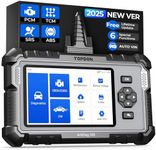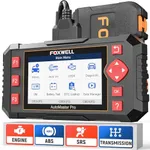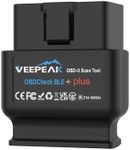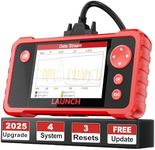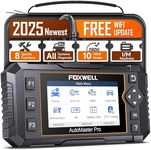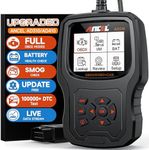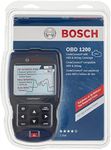Buying Guide for the Best Scan Tool For Engine Transmissions
Choosing a scan tool for engine and transmission diagnostics can feel overwhelming, but understanding your needs and the key features will help you make the right choice. Scan tools range from simple code readers to advanced diagnostic devices. The best fit for you depends on how much information you want, how often you plan to use it, and whether you’ll be working on one car or many. Start by thinking about the vehicles you want to diagnose and the level of detail you need. Then, focus on the main specifications that matter most for your situation.CompatibilityCompatibility refers to whether the scan tool can communicate with your vehicle’s systems. This is important because not all scan tools work with every make, model, or year. Some tools are universal and work with most cars made after a certain year (often 1996 and newer), while others are designed for specific brands or regions. When choosing, check if the tool supports the vehicles you plan to work on. If you have a variety of cars or plan to help friends and family, a tool with broad compatibility is best. If you only need it for your own car, make sure it covers your specific make and model.
Supported SystemsSupported systems indicate which parts of the car the scan tool can access. Basic tools may only read engine codes, while more advanced ones can check transmissions, ABS, airbags, and more. This matters because some problems are not just in the engine. If you want to diagnose transmission issues or other systems, look for a tool that covers those areas. For simple check engine light resets, a basic tool is enough. For deeper diagnostics, especially for transmission or ABS, choose a tool that lists those systems.
Live Data and Freeze FrameLive data means the scan tool can show real-time information from your car’s sensors, while freeze frame captures a snapshot of data when a fault occurs. These features are important for understanding what’s happening in your car beyond just reading error codes. Tools with live data help you see how your engine or transmission is performing right now, which is useful for troubleshooting. If you want to do more than just read codes—like monitor performance or catch intermittent problems—look for a tool with live data and freeze frame capabilities.
Code Reading and ClearingThis refers to the scan tool’s ability to read and erase diagnostic trouble codes (DTCs). All scan tools can read basic engine codes, but some can also clear codes and turn off warning lights. This is important for both identifying issues and resetting the system after repairs. If you just want to know why your check engine light is on, a basic reader is fine. If you want to fix issues and clear the codes yourself, make sure the tool can erase codes as well.
User Interface and DisplayThe user interface and display describe how easy the tool is to use and how information is shown. Some tools have simple screens with basic text, while others have color displays and more detailed menus. This matters because a clear, easy-to-read display makes diagnostics less confusing, especially for beginners. If you’re new to scan tools, look for one with a straightforward interface and clear instructions. If you’re comfortable with technology, you might prefer a tool with more advanced features and a larger screen.
Update and SupportUpdate and support refer to how the scan tool stays current with new vehicles and systems. Some tools can be updated via the internet, while others cannot. This is important because car technology changes over time, and updates ensure your tool remains useful. If you plan to use the tool for many years or on newer cars, choose one that offers regular updates and good customer support. If you only need it for older vehicles, updates may be less important.
![[2025 New] LAUNCH X431 Creader VII+](https://images-proxy.bestreviews.guide/u_5jwshirMJyrRqeauvpiT124WY=/0x150/https://m.media-amazon.com/images/I/51aIJVCKgAL._AC_CX679_.jpg)
